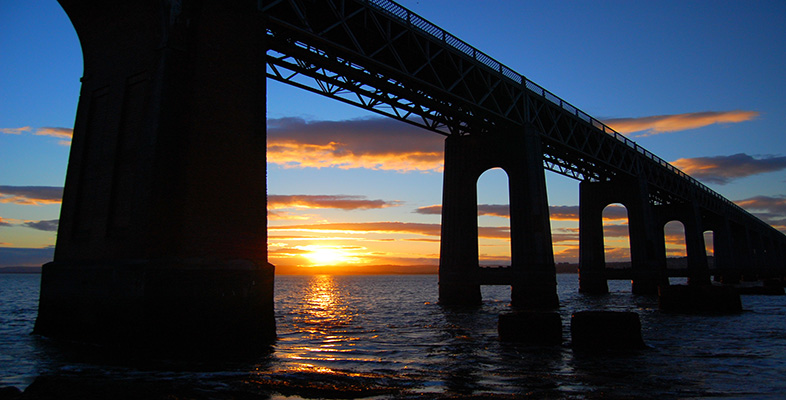3 Tay Bridge disaster
3.1 Overview
The Tay Bridge disaster came towards the end of a period of intense development of the railway system in the UK. The bridge had materials that were well known. Cast iron was used for the columns and wrought iron for the trussed girders.
The construction of the bridge was, at the time, the largest single engineering project in Britain, the Tay estuary being about two miles wide near Dundee, and the bridge was the longest in the world.
In the shallower approaches in the estuary, conventional brick piers were used to support the trussed girders, and they survived the disaster in reasonable condition. A firm rock base to the river existed here, giving secure and reliable foundations. However, the critical part of the bridge lay at the navigable and deeper part of the river, somewhat closer to Dundee. Here the foundations were less secure, consisting of sand and gravel. This part of the bridge therefore had a lighter construction.
Where the estuary was navigable, part of the bridge had to have a greater height because of masted boats, especially for boats going to and from Perth, upstream of Dundee. Here, the line was built within a raised, trussed structure – the so-called high girders part of the bridge.
The chief engineer Thomas Bouch chose to use cast-iron columns bolted together to form the supports. Each support comprised six such columns mounted on 12 concrete and brick-faced platforms built on, and piled into, the riverbed. The outermost columns slanted at a small angle inwards – called a batter – so as to give an extra degree of stability to the piers. Each set of cast-iron columns was braced together by wrought iron tie bars attached to lugs designed into and integral with, the cast iron of the columns.
The stone foundations survive to this day, and are visible from the new Tay rail bridge, which was built quickly after the disaster alongside the old structure.
Much, but not all, evidence from the disaster that befell the Edinburgh–Dundee train passing over the bridge survives in various archives and some of this material will be presented here. In addition, detailed mechanical tensile tests after the disaster were performed by David Kirkaldy and were available to the investigators. The way the disaster was investigated was innovative. The information gathered included:
eye-witness testimony of the collapse;
many photographs of the remains, together with a scale model of the bridge;
many failed samples produced as exhibits at the enquiry;
mechanical tests of the materials of construction;
testimony from numerous expert witnesses.
The disaster had a major influence on the way bridges were built afterwards; in particular, the replacement Tay Bridge built alongside the failed structure, and the larger Forth Rail Bridge near Edinburgh. Steel was the main material of construction in the latter, with greater strength and reliability than cast iron. Bessemer steel, which had been available for some time, could not be used in the original Tay Bridge because of restrictive regulations.
This disaster is a good case study for examining not only the way the investigation developed and the forensic tools used, but also for the new light that can be shed on the causes of the failure using methods not available to, or not appreciated by, the Victorian investigators.
